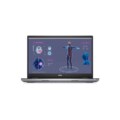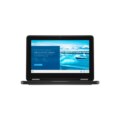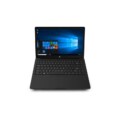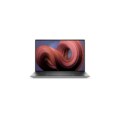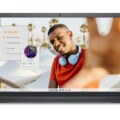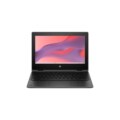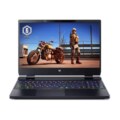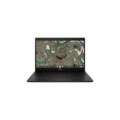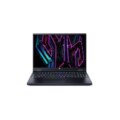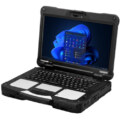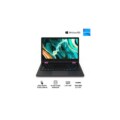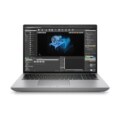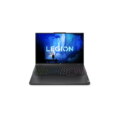Core Innovations CLC14364 14.1″






-
Processor: 1.1 GHz Intel Celeron N3350 Dual-Core
-
Display: 14.1" 1366 x 768 TN
-
RAM: 3GB
-
Storage: 64GB SSD
-
OS: Windows 10 Home in S Mode
-
GPU: Integrated Intel HD Graphics 500
Full Specifications
Operating System
| Operating System The choice of a laptop operating system depends on your preferences, needs, and the type of tasks you'll be performing. here are some of the most popular laptop operating systems: Windows: Microsoft Windows is the most widely used operating system for laptops. The latest version is Windows 10 (with Windows 11 announced and anticipated around my last update). Windows is known for its compatibility with a wide range of software and hardware, making it a versatile choice for various tasks, including gaming, office work, and more. macOS: macOS is the operating system developed by Apple for their MacBook and iMac computers. It offers a sleek and user-friendly interface, strong security features, and seamless integration with other Apple devices and services. As of my last update, the latest version is macOS Monterey. Linux: Linux comes in various distributions (distros), each with its own strengths and purposes. Linux is known for its customization, security, and open-source nature. Popular distributions for laptops include Ubuntu, Fedora, Debian, and Linux Mint. Chrome OS: Developed by Google, Chrome OS is designed primarily for lightweight laptops called Chromebooks. It is centered around the Chrome browser and relies heavily on web-based applications and cloud storage. Chromebooks are generally affordable and suitable for basic tasks like browsing, email, and document editing. FreeBSD: FreeBSD is a Unix-like operating system that is known for its stability, security, and advanced networking capabilities. It is often chosen for server deployments but can also be used on laptops by users who prefer its features. ReactOS: ReactOS is an open-source operating system that aims to be compatible with Windows applications and drivers. It's still under development and might not be suitable for all users, but it's an interesting option for those interested in an alternative to Windows. | Windows 10 Home in S Mode |
| Update Windows updates play a pivotal role in maintaining the overall health and functionality of your laptop. These updates are designed to enhance security, fix bugs, improve performance, and introduce new features to your operating system. Ignoring these updates can lead to security vulnerabilities, decreased performance, and compatibility issues with software and hardware |
Performance
| Processor A laptop processor, also known as a central processing unit (CPU), is the primary component responsible for carrying out instructions and performing calculations in a computer system. It acts as the "brain" of the laptop and plays a crucial role in determining the device's overall performance. Processors are made by companies like Intel, AMD, and others. They come in various models and architectures, each with its own set of features, clock speeds, and capabilities. Some of the popular laptop processor families as of my last update in September 2021 were: Intel Core series: This includes processors like Intel Core i3, Core i5, Core i7, and Core i9. They are designed for general-purpose computing and cater to different levels of performance requirements. AMD Ryzen series: AMD's Ryzen processors provide competitive performance options for laptops. These include Ryzen 3, Ryzen 5, Ryzen 7, and Ryzen 9, offering multi-core processing and good performance for both everyday tasks and more demanding applications. When choosing a laptop, the processor's specifications are essential to consider, as they can impact tasks such as web browsing, video playback, multitasking, and running resource-intensive applications like video editing or gaming. More powerful processors with higher core counts and clock speeds tend to deliver better performance but may also consume more power and generate more heat. It's important to note that processor technology evolves rapidly, so newer models with improved features and performance may be available beyond my last update date. For the most current information, I recommend checking the latest laptof.com models and their specifications from reputable sources or the respective manufacturer's website. | Intel Celeron N3350 |
| CPU there are several manufacturers that produce CPUs (Central Processing Units) for laptops, including: Intel: Intel is one of the leading manufacturers of laptop CPUs. They offer a wide range of processors, including the Core i3, Core i5, Core i7, and Core i9 series. These processors are known for their performance and power efficiency. AMD: Advanced Micro Devices (AMD) is another major player in the laptop CPU market. Their Ryzen series of processors have gained popularity for offering competitive performance and often better integrated graphics compared to some Intel counterparts. Apple Silicon: Apple has also entered the laptop CPU market with its custom-designed processors, starting with the M1 chip. These chips are based on ARM architecture and are used in Apple's MacBook lineup. They offer impressive performance and energy efficiency. Qualcomm Snapdragon: Qualcomm produces ARM-based processors that are commonly found in some Windows laptops and Chromebooks. These chips are known for their connectivity features and long battery life. | 1.1 to 2.4 GHz Dual-Core |
| Graphics Type Laptop graphics typically fall into two main categories: integrated graphics and dedicated graphics. Integrated Graphics: Integrated graphics are built directly into the laptop's main processor (CPU) or chipset. These graphics solutions share system memory (RAM) and are generally less powerful than dedicated graphics cards. They are suitable for everyday tasks like web browsing, word processing, and watching videos, but may struggle with demanding graphical tasks such as gaming or professional graphics work. Dedicated Graphics: Dedicated graphics, also known as discrete graphics, involve a separate graphics processing unit (GPU) in addition to the laptop's CPU. This dedicated GPU has its own dedicated video memory (VRAM) and offers significantly better performance than integrated graphics. Dedicated graphics are essential for tasks like gaming, video editing, 3D modeling, and other graphics-intensive applications. Within the category of dedicated graphics, there are various brands and models of GPUs, such as NVIDIA GeForce, AMD Radeon, and Intel Xe Graphics. These GPUs come in different performance tiers and are often labeled with numerical designations (e.g., NVIDIA GTX 1650, AMD Radeon RX 5600M). The specific graphics capabilities of a laptop will vary based on the model and configuration you choose. | Integrated |
| GPU A Laptop GPU, which stands for Graphics Processing Unit, is a specialized electronic circuit designed to accelerate graphics rendering and video processing tasks in a laptop computer. It's responsible for handling the display output, rendering images, videos, and 3D graphics, which are essential for various tasks and applications, including gaming, multimedia content creation, and even general computing. Laptop GPUs come from various manufacturers, with Nvidia and AMD being the most prominent ones. These GPUs are integrated into the laptop's motherboard or housed in a dedicated graphics card, depending on the laptop's design. When considering a laptop GPU, you'll come across various models and series, each offering different levels of performance and capabilities. Some GPUs are optimized for gaming and high-performance applications, while others are more focused on power efficiency and general computing tasks. When choosing a laptop GPU, it's important to consider your specific needs. If you're into gaming or demanding graphics-intensive tasks, you'll want a laptop with a more powerful GPU. If you're primarily using your laptop for productivity tasks, web browsing, and media consumption, a less powerful GPU might suffice. | Intel HD Graphics 500 |
| Memory Type As of my last update in September 2021, laptop GPUs (Graphics Processing Units) typically use GDDR (Graphics Double Data Rate) memory type for their dedicated video memory. GDDR memory is a specialized type of memory designed for high-performance graphics applications. The most common types of GDDR memory used in laptop GPUs are GDDR5 and GDDR6. GDDR5 was widely used in laptops until the introduction of GDDR6, which offers higher bandwidth and improved performance. Please note that technology can change rapidly, and new developments may have occurred after my last update. Therefore, I recommend checking the specifications of specific laptop models or referring to the latest information from GPU manufacturers to confirm the current memory type used in laptof.com GPUs. | LPDDR3 |
| Total Installed Memory RAM (Random Access Memory) is a type of computer memory that can be accessed randomly, any byte of memory can be accessed without touching the preceding bytes that allows information to be stored and accessed quickly from random locations. RAM is the most common type of memory found in computer systems, smartphones, tablets and other electronic devices. | 3 GB |
| Memory Configuration Laptop memory configuration refers to the way memory modules are installed and used in a laptop to provide the necessary system memory (RAM) for running applications and the operating system. The memory configuration can significantly impact a laptop's performance, especially when dealing with resource-intensive tasks or multitasking. Here are some common laptop memory configurations: Single Channel Memory: In this configuration, a laptop has only one memory module installed. This setup is generally found in entry-level laptops and older models. While it provides basic memory functionality, it may not offer optimal performance compared to dual-channel configurations. Dual Channel Memory: Dual-channel memory configuration is more common in modern laptops. It involves installing two identical memory modules (RAM sticks) of the same capacity. This configuration allows the laptop's memory controller to access both memory modules simultaneously, which can improve overall performance and memory bandwidth. Upgrading Memory: Many laptops offer the option to upgrade the memory by adding more RAM modules or replacing existing ones with higher-capacity modules. For example, if a laptop comes with 8GB of RAM, you can upgrade it to 16GB or more by replacing the existing memory modules with higher-capacity ones. Soldered Memory: Some laptops, especially ultrabooks and thinner models, have memory modules soldered directly onto the motherboard. In such cases, the memory is not user-upgradeable, and you need to choose the desired memory configuration at the time of purchase. When considering the memory configuration for a laptop, it's essential to understand the type of memory (e.g., DDR4, DDR5), the maximum supported capacity, and the number of memory slots available for upgrades (if applicable). For better performance, it's generally recommended to have a dual-channel memory configuration and sufficient memory capacity to meet your specific computing needs. | 3 GB (Onboard) |
| Buffered Memory | No |
| ECC Memory ECC (Error-Correcting Code) memory is a type of RAM (Random Access Memory) that is designed to detect and correct data corruption in real-time. Reliable Performance: A laptop featuring ECC memory ensures greater reliability by detecting and correcting memory errors, making it ideal for tasks that demand data integrity, such as scientific computing and financial modeling. Data Integrity Assurance: ECC memory provides an extra layer of protection against potential data corruption, ensuring the accuracy of computations and preventing system crashes due to memory errors. Workstation-Grade Computing: With ECC memory onboard, this laptop offers workstation-grade reliability suitable for professionals working with critical applications like CAD/CAM, simulations, and server operations. Peace of Mind: Users can work with confidence knowing that ECC memory actively monitors and rectifies memory errors, minimizing the risk of data loss or system instability. Higher Cost: While ECC memory enhances system reliability, it typically comes at a slightly higher cost compared to standard RAM configurations, reflecting the investment in data integrity and stability. | No |
| vPro Support As of my last update in September 2021, vPro is a platform developed by Intel that provides advanced security, manageability, and remote capabilities for business laptops and desktops. It is targeted towards enterprise customers and IT administrators who require additional features for managing and securing their fleet of devices. Laptops with vPro support typically include features like Intel Active Management Technology (AMT), which allows remote access and control of the device even when it is powered off or the operating system is not responsive. This feature is valuable for IT personnel to troubleshoot and manage devices without physically being present at the location. Many major laptop manufacturers, including Dell, HP, Lenovo, and others, offer vPro support in select models targeted at business and enterprise customers. These laptops are usually part of their business-class lineups. Since technology evolves rapidly, I recommend checking with specific laptop manufacturers or their websites to see the latest models and options that support vPro technology. Additionally, you can check Intel's official website for the most up-to-date information on vPro and its supported devices. | No |
| All Test |
Display
| Panel Type Laptop display panels come in different types, each with its own characteristics and advantages. Some of the common laptop display panel types include: IPS (In-Plane Switching): IPS panels offer wide viewing angles and accurate color reproduction. They are known for their better color consistency and image quality compared to other panel types. TN (Twisted Nematic): TN panels are known for their fast response times, making them suitable for gaming and applications where quick motion is important. However, they typically have narrower viewing angles and may exhibit color shifting. VA (Vertical Alignment): VA panels provide a balance between the wide viewing angles of IPS and the fast response times of TN panels. They generally offer good contrast and color reproduction, making them suitable for multimedia tasks. OLED (Organic Light-Emitting Diode): OLED panels offer vibrant colors, true black levels, and individually lit pixels. They are commonly found in high-end laptops and offer excellent image quality, but they may be more susceptible to burn-in over time. AMOLED (Active Matrix Organic Light-Emitting Diode): Similar to OLED panels, AMOLED panels offer vibrant colors and true black levels. They are commonly used in premium laptops and tablets. LED (Light-Emitting Diode): LED is a backlighting technology used in various panel types (such as IPS, TN, and VA). LED backlighting is more energy-efficient compared to traditional CCFL (Cold Cathode Fluorescent Lamp) backlighting. Retina Display: This term is often used by Apple to refer to their high-resolution screens with pixel densities high enough that individual pixels are difficult to distinguish at a typical viewing distance. 120Hz, 144Hz, or Higher Refresh Rate Panels: These panels offer smoother motion in fast-paced applications and games by refreshing the image on the screen more frequently. | TN LCD |
| Size | 14.1″ inch |
| Aspect Ratio Laptop displays come in various aspect ratios, which determine the width and height proportions of the screen. The most common aspect ratios for laptop displays are: 16:9 (Widescreen): This is the most prevalent aspect ratio for modern laptops. It means that for every 16 units of width, there are 9 units of height. This aspect ratio is commonly used for multimedia and general computing tasks. 16:10: Slightly taller than the 16:9 aspect ratio, 16:10 was more popular in the past but is still used in some laptops. It provides a bit more vertical screen real estate, which can be advantageous for tasks like coding and document editing. 3:2: This aspect ratio strikes a balance between 16:9 and 4:3, offering more vertical space than 16:9 but not as much as 4:3. It's often found in devices like Microsoft's Surface series and is favored by some users for its versatility. 4:3 (Standard): This aspect ratio was more common in older laptops and has a more square-shaped screen. It's less prevalent nowadays, as it's not as well-suited for widescreen multimedia content. 21:9 (Ultra-Wide): A less common aspect ratio, 21:9 provides an extremely wide screen that's well-suited for multitasking and immersive gaming or movie-watching experiences. Other Ratios: There are some niche aspect ratios used in specialized laptops, but the ones listed above are the most widely used. | 16:9 |
| Resolution Laptop display resolutions can vary widely depending on the model and manufacturer. here are some common laptop display resolutions: HD (1366x768): This resolution is often found on budget laptops and provides a basic level of clarity. Full HD (1920x1080): Also known as 1080p, this resolution offers a higher level of detail and clarity and is quite common on laptops across different price ranges. Quad HD (2560x1440): This resolution is less common on laptops but provides even more screen real estate and sharper images. 4K Ultra HD (3840x2160): Laptops with 4K displays offer incredibly sharp and detailed visuals, which can be particularly useful for tasks like video editing and graphic design. 3K (2880x1620): This resolution falls between Full HD and 4K, offering a good balance of screen real estate and clarity. OLED and Retina Displays: Some laptops feature OLED or Retina displays, which combine high resolution with vibrant colors and deep blacks. Higher Resolutions: In recent years, some laptops have started to offer even higher resolutions, such as 5K or 6K displays. | 1366 x 768 |
| Touch Screen laptop with a touch screen is a type of laptop that has a built-in touch-sensitive screen, allowing you to interact with the computer using your fingers or a stylus. This feature enables you to perform various tasks by directly tapping, swiping, pinching, or drawing on the screen, similar to how you would interact with a smartphone or tablet. Laptops with touch screens can be particularly useful for activities such as: Navigating and Browsing: You can scroll through web pages, zoom in and out of images, and navigate through files and folders using touch gestures. Content Creation: Touch screens can be handy for digital artists, designers, and note-takers, as they provide a more intuitive way to draw, sketch, and take handwritten notes. Multitasking: Touch screens can make it easier to manage multiple applications and windows, as you can quickly swipe between them or arrange them on the screen with your fingers. Gaming: Some games are optimized for touch controls, and having a touch screen laptop can enhance the gaming experience for certain genres. Presentations: Touch screens can be useful during presentations, allowing you to interact with slides and annotations directly on the screen. Media Consumption: Watching videos, reading eBooks, and interacting with multimedia content can be more engaging with touch-based controls. | No |
| Maximum Brightness The maximum brightness of a laptop's display can vary significantly depending on the specific make and model. As of my last knowledge update in September 2021, most laptops typically have a maximum brightness ranging from around 200 to 400 nits (units of luminance) or more. High-end gaming laptops or laptops designed for professional use might have even higher brightness levels, often exceeding 500 nits or more. However, it's important to note that these numbers are not fixed and can change over time as new laptop models are released with advancements in display technology. To find the specific maximum brightness for a particular laptop model, you would need to refer to the manufacturer's specifications or reviews that provide detailed information about the display's characteristics. | 200 nits / cd/m2 |
| Refresh Rate The refresh rate of a laptop (or any display) refers to the number of times per second that the screen image is refreshed or updated. It is measured in Hertz (Hz). A higher refresh rate can result in smoother and more fluid motion on the screen, which is particularly important for activities like gaming and video playback. Common laptop refresh rates include: 60Hz: This is the standard refresh rate for most laptops and displays. It provides a decent viewing experience for everyday tasks, such as web browsing, document editing, and video watching. 120Hz: A refresh rate of 120Hz is considered a step up from 60Hz and is particularly beneficial for gaming. It offers smoother motion and reduced motion blur, which can enhance the gaming experience. 144Hz: Similar to 120Hz, a 144Hz refresh rate is primarily aimed at gamers. It provides even smoother motion and responsiveness, which can be advantageous in fast-paced games. 240Hz: Some high-end gaming laptops offer a refresh rate of 240Hz. This is even more beneficial for competitive gaming, as it minimizes motion blur and ghosting effects, resulting in extremely smooth visuals. | 60 Hz |
| All Test |
Storage
| Storage Capacity laptop storage capacity can vary widely depending on the make, model, and configuration of the laptop. Laptops typically use Solid State Drives (SSDs) or Hard Disk Drives (HDDs) for storage. SSDs offer faster performance and are becoming increasingly popular in laptops due to their speed and reliability. SSD storage capacities for laptops can range from 128GB to 4TB or even more in high-end models. HDDs, although slower compared to SSDs, can provide larger storage capacities at a lower cost. HDD storage capacities for laptops can range from 500GB to 2TB or more. | 64 GB |
| Solid State Storage Solid State Storage, commonly known as SSD (Solid State Drive), is a type of storage technology that has become increasingly popular in laptops and other computing devices. Unlike traditional Hard Disk Drives (HDDs), which use spinning disks to store data, SSDs use NAND-based flash memory to store data electronically. This difference in technology brings several advantages: Speed: SSDs are significantly faster than HDDs. They offer quicker boot times, faster application loading, and faster file transfer speeds. Durability: SSDs have no moving parts, making them more resistant to physical shocks and vibrations. This makes them ideal for laptops, as they are less prone to damage from being moved around. Energy Efficiency: SSDs consume less power than HDDs, which can help extend battery life in laptops. Size and Weight: SSDs are smaller and lighter than HDDs, allowing laptop manufacturers to create thinner and more lightweight devices. Reliability: The lack of moving parts in SSDs reduces the likelihood of mechanical failures, making them more reliable over the long term. Noise: SSDs produce little to no noise since there are no spinning disks. There are different types of SSDs available, including SATA SSDs, NVMe SSDs, and PCIe SSDs: SATA SSDs: These are similar in form factor to traditional HDDs and connect via the SATA interface. While they offer a significant speed improvement over HDDs, they are not as fast as some other types of SSDs. NVMe SSDs: Non-Volatile Memory Express (NVMe) SSDs use a more efficient protocol and a PCIe (Peripheral Component Interconnect Express) interface to achieve even higher speeds compared to SATA SSDs. They are commonly used in high-performance laptops. PCIe SSDs: These SSDs directly connect to the computer's motherboard through PCIe slots, offering even faster speeds than NVMe SSDs. They are often found in high-end laptops and gaming laptops. When considering a laptop with solid state storage, it's important to look at factors such as storage capacity, speed (measured in read and write speeds), and the specific type of SSD used. Larger storage capacities and higher speeds generally come at a higher cost. It's a good idea to assess your storage needs and budget before making a decision. | 1 x 64 GB Integrated eMMC |
| Optical Drive An optical drive is a hardware component found in many laptops and computers that allows you to read and write data to optical discs, such as CDs, DVDs, and Blu-ray discs. Optical drives have been a standard feature in laptops for many years, but in recent times, they have become less common due to the rise of digital distribution and online storage options. There are two main types of optical drives that were commonly found in laptops: CD/DVD Drives: These drives can read and write data to CDs and DVDs. CD drives are capable of reading and writing CDs, while DVD drives can handle both CDs and DVDs. Blu-ray Drives: These drives are capable of reading and writing data to Blu-ray discs, which have higher storage capacity than CDs and DVDs. They are often used for high-definition video playback and data storage. Some laptops still include optical drives, particularly in business-oriented models or laptops designed for specific purposes like media creation or playback. However, many modern laptops omit optical drives to achieve a thinner and lighter design, as well as to make space for other components like larger batteries or additional storage drives. If your laptop does not have an optical drive, but you still need to use CDs, DVDs, or Blu-ray discs, you can consider purchasing an external USB optical drive. These external drives can be connected to your laptop via a USB port and provide the same functionality as an internal optical drive. | None |
| All Test |
Input/Output
| USB Ports Laptop USB ports are input/output interfaces on laptops that allow you to connect various external devices to your laptop. USB stands for Universal Serial Bus, and it's a standard connection technology used to transfer data and power between devices. USB ports on laptops serve a variety of functions, including: Data Transfer: USB ports allow you to connect external devices such as flash drives, external hard drives, smartphones, cameras, and more, to transfer data between your laptop and these devices. Charging: USB ports can also be used to charge devices like smartphones, tablets, and other gadgets. Some laptops offer "powered" USB ports, which can charge devices even when the laptop is turned off or in sleep mode. Peripheral Connectivity: You can connect various peripherals like keyboards, mice, printers, scanners, and webcams to your laptop through USB ports. Audio and Video Devices: USB ports can connect to audio devices like headphones, microphones, and speakers. Additionally, USB ports can be used for external displays using technologies like USB-C or DisplayLink. Networking: USB-to-Ethernet adapters can be used to provide a wired network connection to laptops that lack built-in Ethernet ports. Gaming: Some laptops use USB ports to connect gaming controllers, steering wheels, and other gaming peripherals. Laptops typically have multiple USB ports of various types, including: USB-A: This is the traditional USB port that has been in use for many years. It's rectangular and commonly used for connecting a wide range of devices. USB-C: This is a newer, smaller, reversible, and more versatile USB port. It supports faster data transfer speeds and can also carry power, audio, video, and other types of data. Thunderbolt: Thunderbolt is a high-speed interface that uses the USB-C port type. It supports even faster data transfer speeds and can handle multiple types of connections, including displays and external GPUs. Micro USB and Mini USB: These are smaller USB connectors that were more common in older devices like cameras and smartphones. They are becoming less prevalent as USB-C gains popularity. | 2 x USB-A |
| Display | 1 x Mini-HDMI |
| Audio in/out Laptop audio in/out" typically refers to the audio input and output capabilities of a laptop computer. Here's what each term refers to: Audio Input (Audio In): This refers to the port or capability of your laptop to receive audio signals from external devices. The most common type of audio input is a microphone input (often labeled with a microphone symbol), where you can connect an external microphone to capture sound. This is useful for tasks like recording voiceovers, video conferencing, or recording musical instruments. Audio Output (Audio Out): This refers to the port or capability of your laptop to send audio signals to external devices, such as speakers, headphones, or external audio systems. The most common type of audio output is a headphone/line-out jack, which allows you to connect headphones or external speakers to listen to audio from your laptop. Depending on the laptop model, the audio input and output capabilities can vary. Some laptops might have separate ports for headphones and microphone inputs, while others might use a single combined audio jack that supports both input and output (known as a TRRS or TRRS+CTIA jack). | 1 x 1/8" / 3.5 mm Headphone Output |
| Built-In Speakers Laptops typically come with built-in speakers that allow you to hear audio without the need for external speakers or headphones. These speakers are integrated into the laptop's chassis and are designed to provide basic audio output for activities such as watching videos, listening to music, or participating in video calls. While laptop built-in speakers are convenient for everyday use, they usually have limitations in terms of audio quality, volume, and bass response compared to dedicated external speakers or high-quality headphones. If you're looking for a better audio experience, you might consider using external speakers, headphones, or even connecting your laptop to a larger audio system. | 2 x 1 W |
| Built-In Microphones Laptop built-in microphones are integrated microphones that come pre-installed in laptops. They are designed to capture audio input, such as spoken words or ambient sounds, and convert it into an electrical signal that can be processed by the laptop's hardware and software. These microphones are commonly used for various purposes, including: Voice Communication: Laptop built-in microphones are often used for video conferencing, voice calls, and online meetings. They enable users to communicate with others through platforms like Skype, Zoom, Microsoft Teams, or voice-over-IP (VoIP) applications. Voice Recording: Built-in microphones can be used for recording voice notes, lectures, interviews, podcasts, and other audio content directly onto the laptop. Speech Recognition: They are essential for speech recognition software, allowing users to interact with their laptops through voice commands. Video Recording: Built-in microphones are commonly used to capture audio during video recording, whether for creating video content, vlogging, or capturing moments. Gaming: Gamers often use laptop built-in microphones for in-game communication with other players during multiplayer sessions. However, there are some limitations to built-in laptop microphones: Sound Quality: The audio quality of built-in microphones can vary widely depending on the laptop's brand, model, and overall design. In general, they may not provide the same level of audio clarity and fidelity as dedicated external microphones. Background Noise: Built-in microphones are often more susceptible to picking up background noise and interference, which can affect the quality of recorded audio. Limited Directionality: Many laptop microphones have limited directionality, which means they may not effectively isolate the desired sound source and reject unwanted noise from other directions. Stereo Imaging: Built-in microphones may not provide accurate stereo imaging or depth perception in audio recording. For users who require higher audio quality or specific features, such as noise cancellation or advanced audio processing, using an external microphone can be a better option. External microphones can be connected to laptops via USB, Bluetooth, or other interfaces, offering improved sound quality and greater control over recording conditions. | Yes |
| Media/Memory Card Slot Laptops commonly have various types of card slots to expand their storage or connect different types of media. These slots can accommodate different types of memory cards or other devices. Common types of slots you might find on a laptop include: SD Card Slot: Secure Digital (SD) card slots are commonly found on laptops and can be used to expand storage or transfer files using SD memory cards. These cards are commonly used in cameras, smartphones, and other devices. MicroSD Card Slot: Some laptops have a smaller slot known as a MicroSD card slot, which is designed to accommodate MicroSD cards that are commonly used in smartphones, tablets, and other compact devices. CF Card Slot: CompactFlash (CF) card slots are less common nowadays but were once widely used in professional cameras and devices requiring high-speed storage. Memory Card Reader: Some laptops come with multi-card readers that support various types of memory cards, including SD, MicroSD, CF, and others. ExpressCard Slot: ExpressCard slots were used in some older laptops to add functionality like additional storage or external devices using ExpressCard adapters. However, this slot has become less common in modern laptops. PC Card Slot (PCMCIA): Similarly, PC Card slots (also known as PCMCIA slots) were used in older laptops to add functionality through PC Card adapters. Like ExpressCard slots, PC Card slots are less common today. Smart Card Slot: Some laptops include smart card slots, which are used for secure authentication and data storage using smart cards. SIM Card Slot: Found mainly in laptops with cellular connectivity, a SIM card slot allows you to insert a SIM card for mobile data connectivity. | Single Slot: microSD/microSDHC [64 GB Maximum] |
| All Test |
Connectivity
| Ethernet Port An Ethernet port on a laptop is a hardware interface that allows you to connect your laptop to a wired local network or the internet using an Ethernet cable. This type of connection is often faster and more stable than a wireless (Wi-Fi) connection, making it useful for tasks that require a consistent and reliable network connection, such as online gaming, large file transfers, or streaming high-definition video. To use the Ethernet port on your laptop, you'll need an Ethernet cable, also known as a network cable or LAN cable. One end of the cable plugs into the Ethernet port on your laptop, and the other end plugs into a compatible port on a router, modem, or network switch. The port on your laptop is usually labeled with a symbol resembling three arrows pointing up and down, representing the concept of data transfer. To establish an Ethernet connection on your laptop, follow these steps: Plug in the Cable: Insert one end of the Ethernet cable into the Ethernet port on your laptop. Connect to the Network Device: Insert the other end of the Ethernet cable into an available Ethernet port on your router, modem, or network switch. Wait for Connection: Once the cable is connected, your laptop should automatically detect and establish a connection to the network. You may see a notification indicating that you are now connected via Ethernet. Configure Network Settings (if required): In most cases, your laptop will automatically obtain an IP address and network settings through DHCP (Dynamic Host Configuration Protocol). However, if you need to set a specific IP address or configure other network settings, you can do so in the network settings of your laptop's operating system. Check Connection Status: You can check the status of your Ethernet connection by looking at the network icon in the system tray or by going to the network settings menu. | None |
| Wi-fi Wi-Fi is a popular wireless networking technology using radio waves to provide high-speed network connections that allows devices to communicate without cords or cables, Wi-Fi is increasingly becoming the preferred mode of internet connectivity all over the world. | Wi-Fi 4 (802.11n); Single-Band (2.4 GHz) |
| Bluetooth Bluetooth is a wireless communication technology that allows devices to exchange data and connect over short distances. Many laptops come equipped with built-in Bluetooth capabilities, which enable them to connect to a variety of devices such as wireless mice, keyboards, headphones, speakers, smartphones, and more. Here are some common uses of Bluetooth on laptops: Wireless Peripherals: You can connect wireless peripherals like mice, keyboards, and styluses to your laptop via Bluetooth. This eliminates the need for USB dongles or cables. Audio Devices: Bluetooth-enabled laptops can connect to wireless headphones, earbuds, and speakers. This provides you with the flexibility to enjoy audio without the hassle of cords. File Transfer: Bluetooth can be used to transfer files between your laptop and other Bluetooth-enabled devices like smartphones or tablets. This can be useful for sharing small files quickly. Tethering: Some laptops can use Bluetooth to tether to your smartphone, allowing you to share your phone's internet connection with your laptop without the need for a physical cable. Printer Connections: Bluetooth can be used to connect your laptop to a Bluetooth-enabled printer for wireless printing. Data Synchronization: You can use Bluetooth to sync data between your laptop and other devices, like contacts, calendars, or even certain apps. Here's how to enable Bluetooth on most laptops: Windows: Go to the Start menu, then Settings (the gear icon). Click on "Devices," then "Bluetooth & other devices." Toggle on the "Bluetooth" switch. Mac: Click on the Apple menu, then select "System Preferences." Click on "Bluetooth" and toggle it on. Linux: The process can vary depending on the Linux distribution you're using, but generally, you can find Bluetooth settings in the system settings or control panel. Troubleshooting: If your laptop's Bluetooth isn't working, make sure that it's enabled in the settings. Also, ensure that the device you're trying to connect to is in pairing mode. Sometimes, updating or reinstalling Bluetooth drivers might be necessary. Keep in mind that Bluetooth has limitations, such as its relatively short range compared to Wi-Fi, and it might not be as suitable for high-speed data transfers. If you're experiencing connectivity issues, make sure there are no physical obstructions between your laptop and the Bluetooth device, and check for any interference from other electronic devices. | 4.0 |
| GPS A laptop GPS (Global Positioning System) refers to the inclusion of GPS technology within a laptop computer. GPS is a satellite-based navigation system that allows devices to determine their precise location, velocity, and time information. When integrated into a laptop, GPS functionality can provide various benefits: Location Services: A laptop with GPS can determine its geographic location, which can be useful for applications like mapping, navigation, and location-based services. Navigation: With GPS on your laptop, you can use mapping software to get directions, plan routes, and navigate to specific destinations. Geotagging: Geotagging allows you to embed location information into photos, videos, and other media. This can be handy for organizing and sharing memories. Asset Tracking: GPS-enabled laptops can be used for tracking assets, such as vehicles or equipment, for logistics and management purposes. Emergency Services: In some cases, GPS can assist emergency services in locating a laptop user in distress. Field Work: Professionals who work in fields like geology, surveying, agriculture, and outdoor research may use GPS-equipped laptops to accurately record locations. Sports and Fitness: GPS can be used for tracking fitness activities, such as running or cycling, and analyzing performance metrics like distance and speed. | None |
| NFC NFC (Near Field Communication) is a technology that enables short-range wireless communication between devices, typically within a few centimeters. It's often used for contactless payments, data exchange, and various other applications. However, as of my last knowledge update in September 2021, NFC technology is more commonly found in smartphones, tablets, and other portable devices rather than laptops. While some laptops do support NFC, it's not as widespread as in other devices. Laptops with NFC capabilities might allow you to perform tasks like quickly transferring files by tapping two NFC-enabled devices together, or potentially using NFC for secure login/authentication. If you're looking for a laptop with NFC capabilities, I recommend checking the specifications of specific laptop models you're interested in, or contacting the manufacturer directly to inquire about NFC support. Keep in mind that technology evolves, and newer laptop models may offer more advanced connectivity options. | No |
| Webcam A laptop webcam, also known as a laptop camera or webcam, is a built-in camera that comes pre-installed in most modern laptops. It allows users to capture video and images, participate in video calls, and engage in activities like live streaming, online meetings, vlogging, and more. Key features of laptop webcams include: Resolution: Laptop webcams come in various resolutions, such as 720p (HD), 1080p (Full HD), and even higher resolutions in some premium models. Higher resolution webcams provide clearer and more detailed video output. Frame Rate: Frame rate determines how smooth the video appears. Common frame rates for laptop webcams are 30 frames per second (fps) and 60 fps. Higher frame rates result in smoother video quality. Auto-Focus: Some laptop webcams have auto-focus capabilities, which ensure that the subject remains sharp and clear even if you move around during a video call. Low-Light Performance: Many webcams come with features like low-light correction, which helps improve video quality in dimly lit environments. Microphone: Most laptop webcams are equipped with built-in microphones for audio input during video calls and recordings. However, the audio quality of built-in microphones may vary. Privacy Shutter: Some laptops offer a built-in privacy shutter that can be closed to physically cover the webcam when not in use, providing an extra layer of privacy and security. Software and Compatibility: Laptop webcams typically work with popular video conferencing applications such as Zoom, Skype, Microsoft Teams, and more. They may also come with additional software features like filters, effects, and settings adjustments. Positioning: The location of the webcam can vary depending on the laptop model. Some laptops have webcams positioned above the screen, while others might have them below the screen or even on the keyboard deck. When selecting a laptop with a webcam, it's important to consider your specific needs, such as the intended use (e.g., casual video calls, professional meetings, content creation), the desired video quality, and any special features you might require. | User-Facing: 0.3 MP |
| All Test |
Battery
| Battery Type Laptop batteries can come in various types, but the most common types are: Lithium-Ion (Li-Ion): This is the most widely used type of laptop battery. Li-Ion batteries are lightweight, have a high energy density, and hold a charge well. They are commonly used in most modern laptops. Lithium-Polymer (Li-Po): Li-Po batteries are a variation of Li-Ion batteries. They can be molded into different shapes and sizes, making them suitable for laptops with unique form factors. Li-Po batteries also offer a bit more flexibility in design compared to traditional cylindrical Li-Ion batteries. Nickel-Cadmium (NiCd): NiCd batteries are less common in laptops today due to their lower energy density and higher environmental concerns. They were used in older laptop models but have largely been replaced by more advanced battery technologies. Nickel-Metal Hydride (NiMH): NiMH batteries are also less common in laptops nowadays, as they have been mostly replaced by Li-Ion and Li-Po batteries. They have a higher energy density than NiCd batteries but still fall behind Li-Ion and Li-Po batteries in this regard. Solid-State Batteries: While still emerging, solid-state batteries are being researched and developed as a potential future alternative to traditional lithium-based batteries. These batteries use solid electrolytes instead of liquid ones, potentially offering higher energy density, faster charging, and improved safety. | Lithium-Ion Polymer (LiPo) |
| Capacity Laptop battery capacity is typically measured in milliampere-hours (mAh) or watt-hours (Wh). It represents the amount of energy the battery can store and provide to the laptop. A higher capacity generally translates to longer battery life, but it's also influenced by factors like the laptop's power efficiency, usage patterns, and hardware components. | 5000 mAh |
| All Test |
Keyboard & Mouse
| Keyboard Laptop keyboards are an essential input device that allows you to interact with your laptop by typing text, entering commands, and performing various functions. Here's some information about laptop keyboards: Types of Keyboards: Laptop keyboards come in various styles, but the two most common types are membrane and mechanical keyboards. Membrane Keyboards: These are the most common type of laptop keyboard. They use a rubber dome mechanism beneath the keys to register key presses. They are usually quieter and have a softer feel compared to mechanical keyboards. Mechanical Keyboards: Some higher-end laptops and gaming laptops offer mechanical keyboards. These keyboards use individual mechanical switches for each key, providing a more tactile and audible feedback when typing. Mechanical keyboards are often preferred by users who type extensively or gamers who want a more responsive feel. Key Layout: Laptop keyboards generally follow the QWERTY layout, which is the standard layout for English-language keyboards. However, there might be variations in the placement of certain keys depending on the laptop's design and region. Key Travel and Feedback: The key travel refers to the distance a key travels when pressed. Keyboards with more key travel can provide a more satisfying typing experience for some users. Feedback refers to the tactile response and auditory "click" that some keyboards produce when a key is pressed. This feedback can help users know that a keypress has been registered. Backlit Keyboards: Many laptops offer backlit keyboards, which allow you to type in low-light conditions. Backlit keyboards have illuminated keys, and you can often adjust the brightness and color of the backlight. Function Keys and Shortcuts: Laptop keyboards typically include a row of function keys (F1, F2, etc.) at the top, which can be used for various functions like adjusting brightness, volume, and screen settings. Many laptops also include shortcut keys for tasks like launching web browsers, email, and media controls. Keyboard Layout Variations: Different regions might have variations in keyboard layouts to accommodate specific characters or symbols used in that language. For example, the placement of special characters and keys like the Enter key might vary. Keyboard Maintenance: To keep your laptop keyboard in good condition, it's important to clean it regularly. Dust and debris can accumulate between the keys, affecting their performance. You can use compressed air or a soft brush to clean the keyboard. Be cautious when cleaning and avoid using liquids that could damage the keyboard. | Notebook Keyboard |
| Pointing Device A laptop pointing device, also known as a touchpad or trackpad, is an input device commonly found on laptops and some desktop computers. It serves as a replacement for a traditional computer mouse and allows users to control the movement of the cursor on the screen. The touchpad typically consists of a flat surface with sensors underneath that detect the movement of your finger or fingers as you glide them across the surface. It often supports various gestures, such as tapping, clicking, scrolling, and pinching, to perform different actions on the computer, such as opening files, navigating web pages, and more. Some laptops also come with additional features, such as multi-touch support, which allows you to use multiple fingers simultaneously for more advanced gestures. Some touchpads even support pressure-sensitive input, allowing you to adjust the cursor speed or perform specific actions based on the pressure applied. | TouchPad |
| All Test |
General
| All Test |
Packaging Info
| Package Weight The weight of a laptop can vary significantly depending on its make, model, and specifications. Generally, laptops can range from as light as 2 pounds (less than a kilogram) for ultra-portable models to over 10 pounds (around 5 kilograms) for gaming or workstation laptops with larger screens and more powerful hardware. It's always a good idea to check the specifications provided by the manufacturer for the exact weight of the laptop you're interested in. | 3.82 lb |
| Box Dimensions Laptop box dimensions can vary depending on the manufacturer, model, and any additional packaging materials. However, a common laptop box size might be around 15-20 inches in length, 10-15 inches in width, and 2-4 inches in height. These dimensions are just rough estimates and can vary significantly. If you need precise measurements for a specific laptop model, it's best to check with the manufacturer or retailer directly. | 17.2 x 10.9 x 2.6" |
| All Test |
the Core Innovations CLC14364 Series Laptop emerges as a versatile companion for work, study, and leisure. With its sleek 14.1″ design and a host of features tailored to enhance productivity, this laptop is a dynamic tool that adapts to your lifestyle.
Unveiling the Core Innovations CLC14364 Series Laptop
The Core Innovations CLC14364 Series Laptop is more than just a device; it’s a gateway to productivity. Armed with a 1.1 GHz Intel Celeron processor and 3GB of RAM, this laptop effortlessly bridges the gap between work, play, and online interactions. The Intel Celeron CPU ensures smooth performance across various applications, making multitasking a breeze, while the 3GB of RAM provides the necessary power to keep up with your demands.
Immersive Visual Experience
The laptop’s 14.1″ TN display with a resolution of 1366 x 768 offers an immersive canvas for your tasks and entertainment. The TN LCD panel ensures clarity and crispness in visuals, while the 200 nit brightness optimizes battery life without compromising on visual quality. Whether you’re diving into work documents or catching up on your favorite shows, the Core Innovations CLC14364 delivers a satisfying visual experience.
Efficient Storage and Connectivity
With 64GB of local storage, the Core Innovations CLC14364 strikes a balance between ample space for critical files and the need for efficiency. This storage capacity allows you to keep your important documents within arm’s reach without bogging down the system’s performance. For expanding your storage options, the microSD card slot accommodates compatible memory cards up to 64GB, ensuring you have room for all your media and files.
Connectivity is a cornerstone of modern productivity, and the Core Innovations CLC14364 excels in this aspect. The laptop features a Mini-HDMI port and two USB-A ports, enabling seamless connection to external displays and various peripherals. Bluetooth connectivity further enhances the laptop’s versatility by enabling effortless pairing with wireless accessories, making it easier than ever to create a customized workspace tailored to your preferences.
Communication Redefined
The Core Innovations CLC14364 Series Laptop transforms communication into an immersive experience. The integrated 0.3MP webcam, microphone, and dual 1W speakers facilitate effortless video conferencing, online classes, and catching up with friends and family. Whether you’re participating in virtual meetings or sharing a moment with loved ones, this laptop’s communication features ensure you stay connected with crystal-clear audio and video.
Empowering with Windows 10 in S Mode
Operating systems play a crucial role in productivity, and the Core Innovations CLC14364 Series Laptop is equipped with Windows 10 in S Mode to streamline your experience. This operating system not only ensures heightened security through app installations via the Windows Store but also optimizes performance by reducing CPU and RAM requirements. The streamlined design and integration with OneDrive for automatic data backup further contribute to a seamless and worry-free computing experience.
